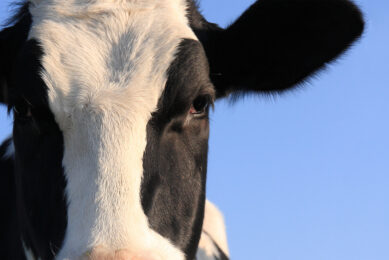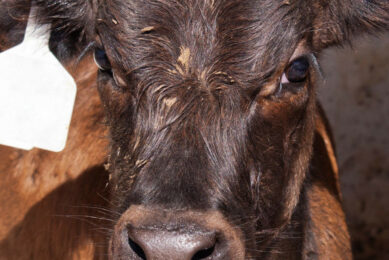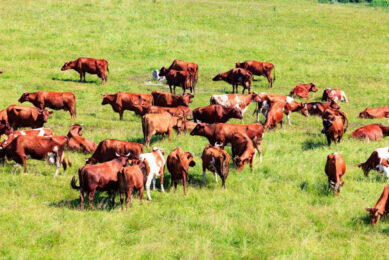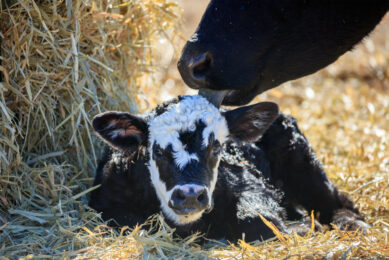Unexpected feasibility of sex-sorted sperm
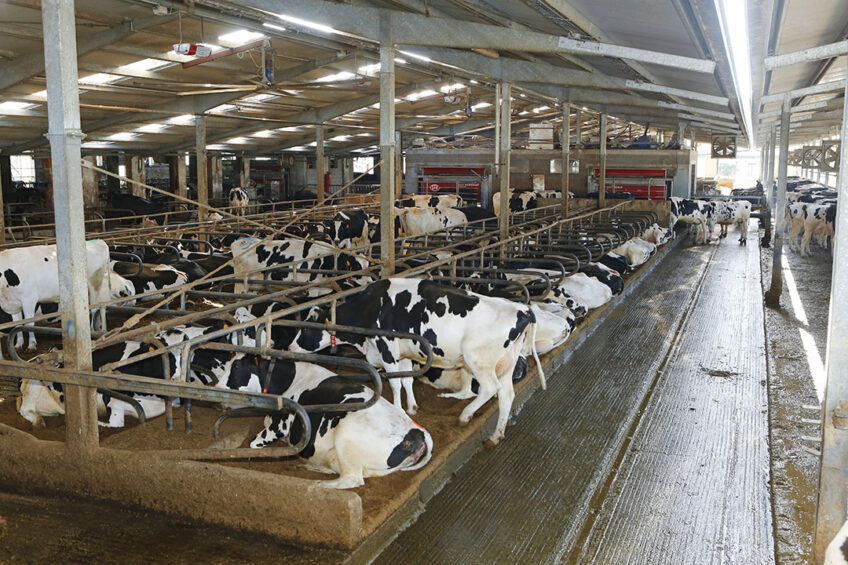
What are the success rates when it comes to sex-sorted sperm, the factors that minimise cost, and how does genetic progress factor in? We dive into these topics and also look at how producers can create the best breeding strategy possible, using sex-sorted, conventional and beef semen.
It’s no surprise that the use of sex-sorted semen is growing globally among dairy producers due to the many benefits it can provide. By using it, producers can maintain or expand the size of their herds with a minimum of cost and without exposing their animals to potential new biosecurity threats through the purchase of heifers from other farms.

Using sex-sorted sperm also ensures the best available genetics is added to a herd. One factor affecting cost of sex-sorted (SS) sperm in dairy cows is the pregnancy success rate, which is still not equal to that of conventional sperm. This was noted in a Master’s thesis published by Briley Loggan at Western Kentucky University in 2019, where Loggan points to reports putting the success of SS sperm in comparison to conventional as low as 60% but ranging up to 90%. However, in the Master’s study, Loggan found that pregnancy rates were similar for the two semen types.
The lower pregnancy rates of SS semen is generally blamed on the tough conditions of the sorting process. Sperm cells are dyed and laser light is used to examine them, for example. They are centrifuged. They are put through flow cytometers at high speed and under significant pressure. Various research groups have tried to compensate for this by increasing the number of SS sperm in an artificial insemination (AI) treatment, but it hasn’t made any difference.
The tips for maximising success of SS are what you would expect. Experts recommend using proven inseminator technology and handling SS sperm with extreme care (thawing it correctly and so on). They also recommend using sex-sorted semen only in first and second AI treatments in virgin heifers because of their increased fertility rates compared to older lactating cows.
Better results
A couple of studies have found that fresh SS sperm provides better results that frozen. Building on these, in late 2019, Stephen Butler, research officer in Reproductive Physiology & Systems Biology at the Animal and Grassland Research and Innovation Centre in Teagasc Ireland, with colleagues at the Research Operations Group, University College Dublin and Irish Cattle Breeding Federation, published studies on this. (SS sperm in Irish dairy herds, says Butler, is used in less than 10% of total AI treatments.)
Whilst the team’s expectation was that fresh SS would be better than frozen, this was not observed. “Based on our observations, it seems that the diluent used was not optimal for fresh SS,” he says, but he adds that others have achieved good pregnancy success rates using SS with an alternative diluent.
Butler and colleagues published another study in January 2020 on frozen SS semen. They found unsurprisingly that relative pregnancy success rate per AI treatment using SS semen was greater in cows with high/average fertility potential than in cows with low potential, compared with using conventional semen. They concluded that frozen SS provided lower overall pregnancy rates, but results were dependent on the bull, fertility potential of the cow and herd.

Crunching the numbers
In August 2019, Professor Albert De Vries of the Department of Animal Sciences at the University of Florida published a very comprehensive study of ‘The Economics of Sexed Semen in Dairy Heifers and Cows. He notes that use of SS sperm in dairy herds in Florida is very common, and dairy farmers in many other states also use it.
Heifers are also a little genetically better than older cows just due to genetic progress, so it’s best to use them for herd breeding
SS semen is usually used for first and perhaps second breedings in Florida dairy herds, due to its higher cost and the fact that heifers are more fertile. “Heifers are also a little genetically better than older cows just due to genetic progress, so it’s best to use them for herd breeding,” De Vries explains. “Genetic progress is improving at a rate that’s twice as fast as ten years ago.”
If not considering genetic progress, De Vries has calculated that use of SS semen is profitable when the value of the heifer calf is generally at least US $400 more than the value of a bull calf.
Use of beef semen
And while every producer’s situation is different, De Vries notes that some of them in Florida and beyond are also using beef semen for their older cows or cows in the herd that are genetically poorer (which also tend to be older cows). There are several reasons for this.
Firstly, crossbred calves can be sold for much more than male or female dairy calves, about US $100 more, for example, than dairy bull calves. Also, the cost of beef semen is similar to conventional dairy semen and offers good conception rates. In addition, when a dairy farmer sells some young heifers because he or she has too many, there may not be much of a market; potential buyers usually wonder, says De Vries, if they’re being offered the seller’s worst genetics.
Some producers, he adds, have the strategy of buying heifers on an ongoing basis, breeding them all with beef semen and continually selling cross-bred calves. “But producers who do this need a quality heifer source,” he says. “Usually that means they have a long-term relationship with a seller who can be trusted.”
The best bulls need to be available to ensure that genetic gain is not slowed down because of using SS
Future outlook
Butler believes it’s likely that SS sperm usage will increase in the coming years as the technology improves, but it must be cost effective and farmers must be able to have confidence they will get an acceptable pregnancy rate. In addition, he says “the best bulls need to be available to ensure that genetic gain is not slowed down because of using SS” and the process must “allow a large team of bulls to be used.”
De Vries notes that more and more across the US, semen of the best bulls is now only available in SS form. This is because with conventional semen, there is a greater chance a producer will get a bull calf, and semen companies do not want competitors to potentially gain access to the genetics within those calves. Regarding the use of a large pool of bulls, he adds that if the SS semen is being taken from young bulls with good genomic test results but no daughters, using more bulls mitigates the risk of any particular bull’s potentially-lower genetic reliability.
A new model
Looking forward, like Butler, De Vries believes the use of SS sperm will continue to rise, but that the dairy industry will increasingly move to a SS semen-beef semen model, with little use of conventional semen.
“I think producers leave money on the table when they don’t explore all their semen options,” he asserts. “That being said, whilst there are some simple rules like only use SS sperm in heifers and perhaps for second breedings, it’s quite complicated to create the best overall strategy. It’s complicated enough that most farmers would want some outside help to analyse the smartest mix of using SS semen, conventional dairy semen and beef semen. Each herd is different, and the producer’s goals need to be looked at, and maybe some genomic testing needs to be done as well.”
Join 13,000+ subscribers
Subscribe to our newsletter to stay updated about all the need-to-know content in the dairy sector, two times a week.



